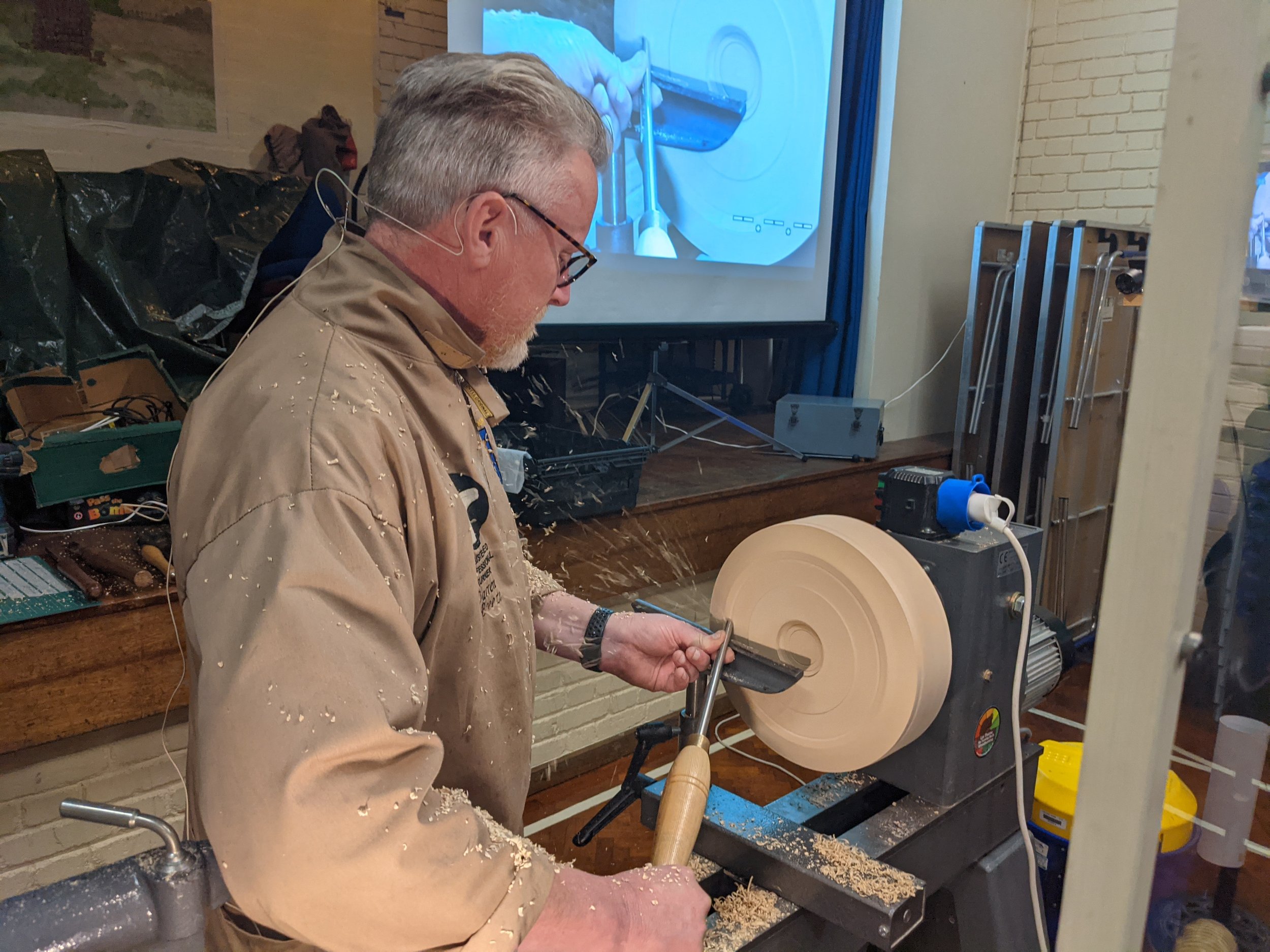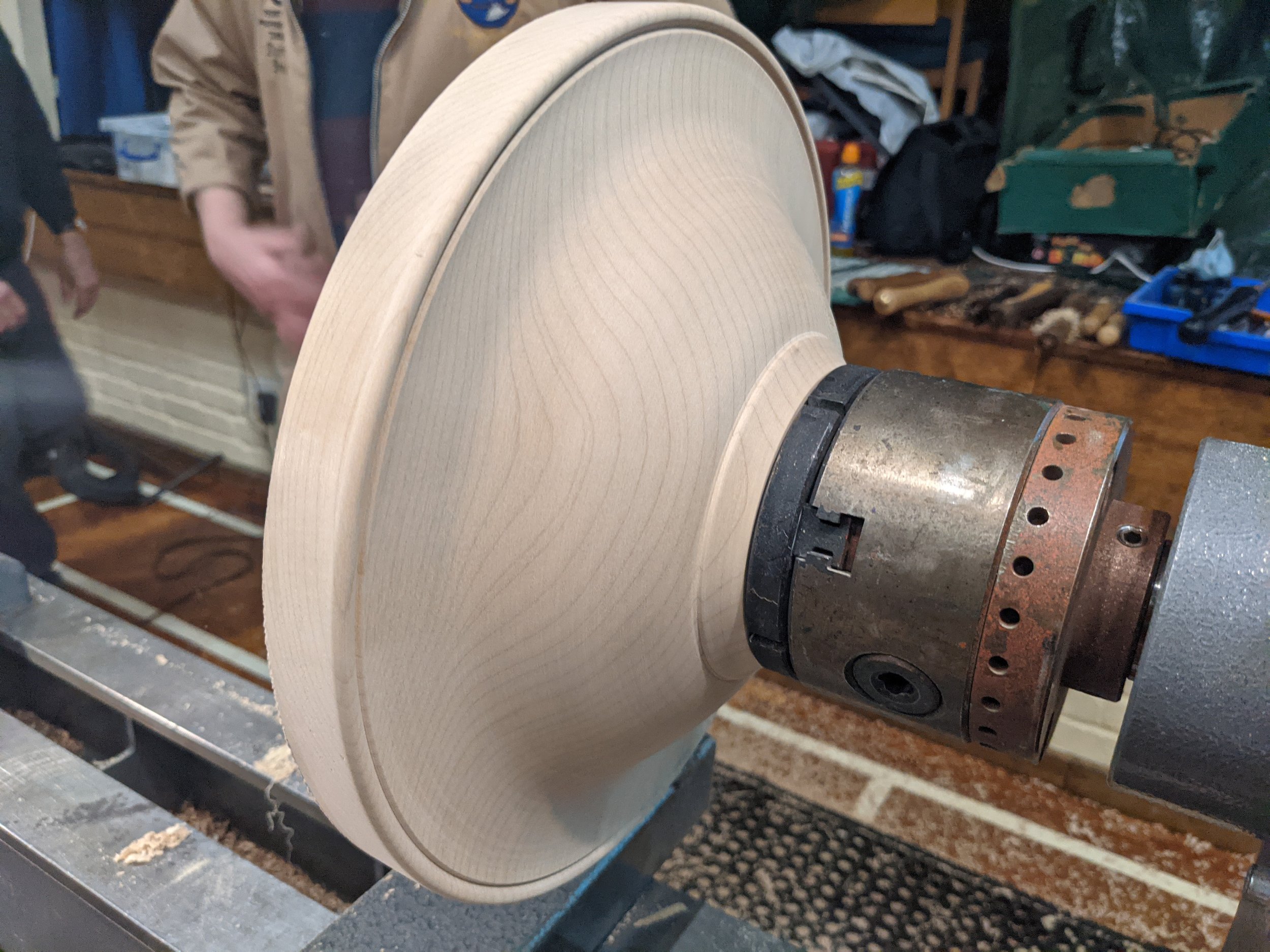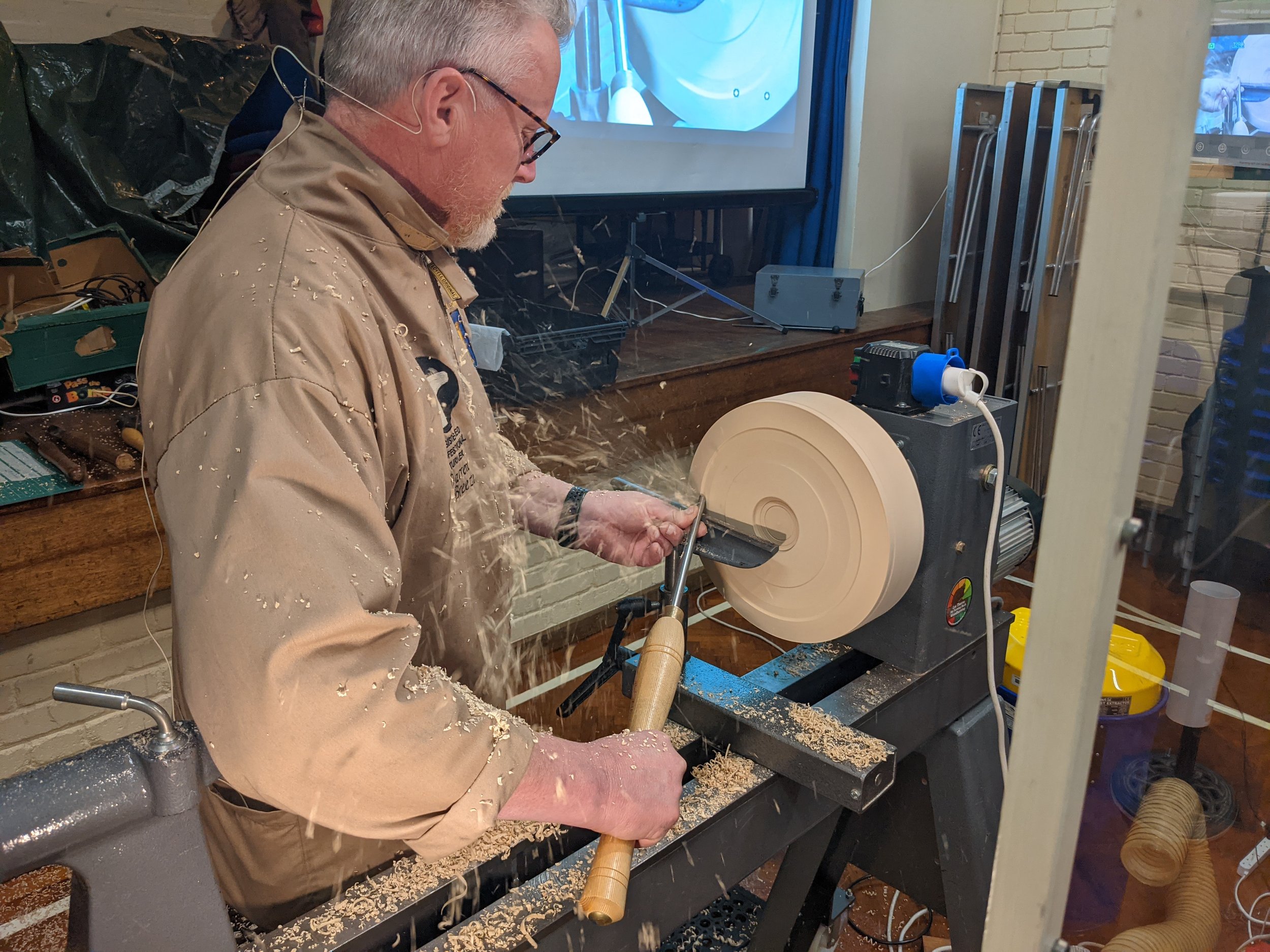Darren Breeze
17th November 2021
17th November 2021
Darren has been turning since 2007, in that time he was won numerous awards and competitions for his outstanding work. In 2016 he won a 1st prize at Wizardry at Wood, and in 2017 applied to join the Register of Professional Turners.
With his studio and shop based at 117 High Street, Lowestoft, Suffolk, NR32 1HN, Darren, a club favourite, is renown as one of the premier turners and demonstrators, and tonight was no different with his rising sun bowl.
ABC - Anchor Bevel Cut; Whilst delivering an entertaining event, Darren also gives tips that are useful reminders giving something that people of all ability levels would benefit from. The ABCs are easily forgotten, but a very valuable thing to remember when approaching all cuts. Remember, Anchor the tool to the tool rest, ensure that the Bevel support (rubbing) is there from the tool, and then finally, Cut!
Add a bead on the rim to add interest, a lovely feature.
Darren prefers his tools ground similarly so that he can turn and not practice his sharpening. He prefers a 40 degree angle for most of his gouges - Bowl, Spindle and Spindle Roughing Gouge. His tip for the beading and parting tool is to colour one side of the steel, so that when you sharpen and get the burr, the correct side (with the burr) helps with cutting.
When approaching cuts, He tells us to keep the handle low to clean the face, ensure you’re keeping the bevel on the cut, and move body with the pull and push cuts. Push cut to initially shape outside of a plater away from chucking point, alternatively a pull cut could be used with long grind tool to remove as much wood as quickly as possible. He also warns not to push too hard, else you'll get too much tool bounce and to also put weight into tool rest on the tool, to remove undulations in cutting. With the Spindle Roughing Gouge, you can use the wings like a skew chisel if held at the appropriate angles.
Darren shows such control of his tools and part of his secret is to manage the pressure through the tool. He recommends using two fingers on the handle of the tool to reduce pressure put through the tool when over the bars of the lathe. This gives you the finesse you need whilst maintaining a good grip of the tool.
When moving to the different parts of the platter, Darren says that ripples can be removed with scrapers - Darren uses all negative rake scrapers, both angles of the tool at 40 degrees. With his square-edge scrapers, he adds a small rounded edge to avoid dig-ins on the corners, again he uses the burr from grinding to cut more effectively. Negative rake scrapers are more delicate than regular scrapers - use gently and on the centre line to get best results, and always uses the heaviest scraper on to the work possible to reduce vibrations.
When questioned on work holding methods, Darren says that he generally uses screw chucks over faceplates as they’re easier and faster to use, and to also reduce waste. The tail centre adds support as necessary.
Marking out the Sun for the platter
Remember to brush in from the edge
You’ll need some puff to blow through the tube to get the stain out. Don’t breath in!
Work off the edge of the piece and work back into the body. When you use a bowl gouge, start at 1.30 on the clock face and use the gentle cuts. Take your time! Use steps to get the initial cuts and shape right. If using steps, you can close flute at 3 o’clock to sit in the step and then open tool to cut. Alternatively, slice into the wood with closed flute. Ensure the bevel is cutting (pointing) at the right angle, especially at the entry point as that's the most difficult part.
To shear scrape with long wing of finger nail grind, essentially close the flute and use light pressure, and float over surface. 45 degrees to the face of the wood to get a clean cut.
Regarding sanding, Darren prefers to power sand at it saves time, ultimately reducing cost for the customer.
On staining bare wood (not sealed or have any finish), use a paint brush with stain from the edges and work in to the centre. Use good quality tape to set off stain from bleeding over. Moving on to using a venturi pipe sprayer, use the stain from the pot and blow from the pot! Always spray blowing down hill as the colour will run over if you don’t and curl over the edges of the piece. Work in the bottom half of the piece where possible. Blowing stains on are easier to blend than a brush, which is why Darren prefers to use a blowing tube to put on stain.
When masking the bowl, make sure the tapers are the same else it won't look right, especially for this sort of platter. Once masking tape is on, use ebonising lacquer to get the black finish and again spray downward to prevent over spray. Work on bottom half of the piece and rotate on the lathe. Before the lacquer dries, pull off the tape to prevent cracking.
When adding the bowl at the end of the piece, put a step in to give best chance for tool not to kick back. Use the heel of your hand to push tool, be confident else you will get a kick back. Darren says that usually skew chisel problems happen from hesitation. Unfortunately
Thanks to Darren for a fantastic evening.











































